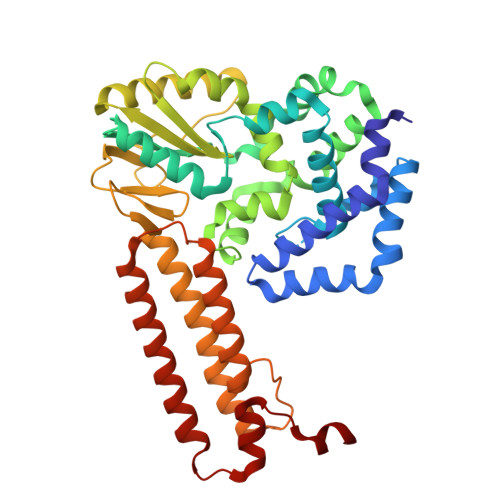Structural basis for the evolution of a domesticated group II intron-like reverse transcriptase to function in host cell DNA repair.
Park, S.K., Guo, M., Stamos, J.L., Kim, W., Lee, S., Zhang, Y.J., Lambowitz, A.M.(2025) Proc Natl Acad Sci U S A 122: e2504208122-e2504208122
- PubMed: 40729381
- DOI: https://doi.org/10.1073/pnas.2504208122
- Primary Citation of Related Structures:
9D4S, 9D5X - PubMed Abstract:
A previous study found that a bacterial group II intron-like reverse transcriptase (G2L4 RT) evolved to function in double-strand break repair (DSBR) via microhomology-mediated end-joining (MMEJ) and that a mobile group II intron-encoded RT has a basal DSBR activity that uses conserved structural features of non-long terminal repeat (non-LTR)-retroelement RTs. Here, we determined G2L4 RT apoenzyme and snap-back DNA synthesis structures revealing unique structural adaptations that optimized its cellular function in DSBR. These included an RT3a structure that stabilizes the apoenzyme in an inactive conformation until encountering a DNA substrate; a longer N-terminal extension/RT0-loop with conserved residues that together with a modified active site favors strand annealing; and a conserved dimer interface that localizes G2L4 RT homodimers to DSBR sites with both monomers positioned for MMEJ. Our findings reveal how an RT can function in DNA repair and suggest ways of optimizing related RTs for genome engineering applications.
- Department of Molecular Biosciences, University of Texas at Austin, Austin, TX 78712.
Organizational Affiliation:

















